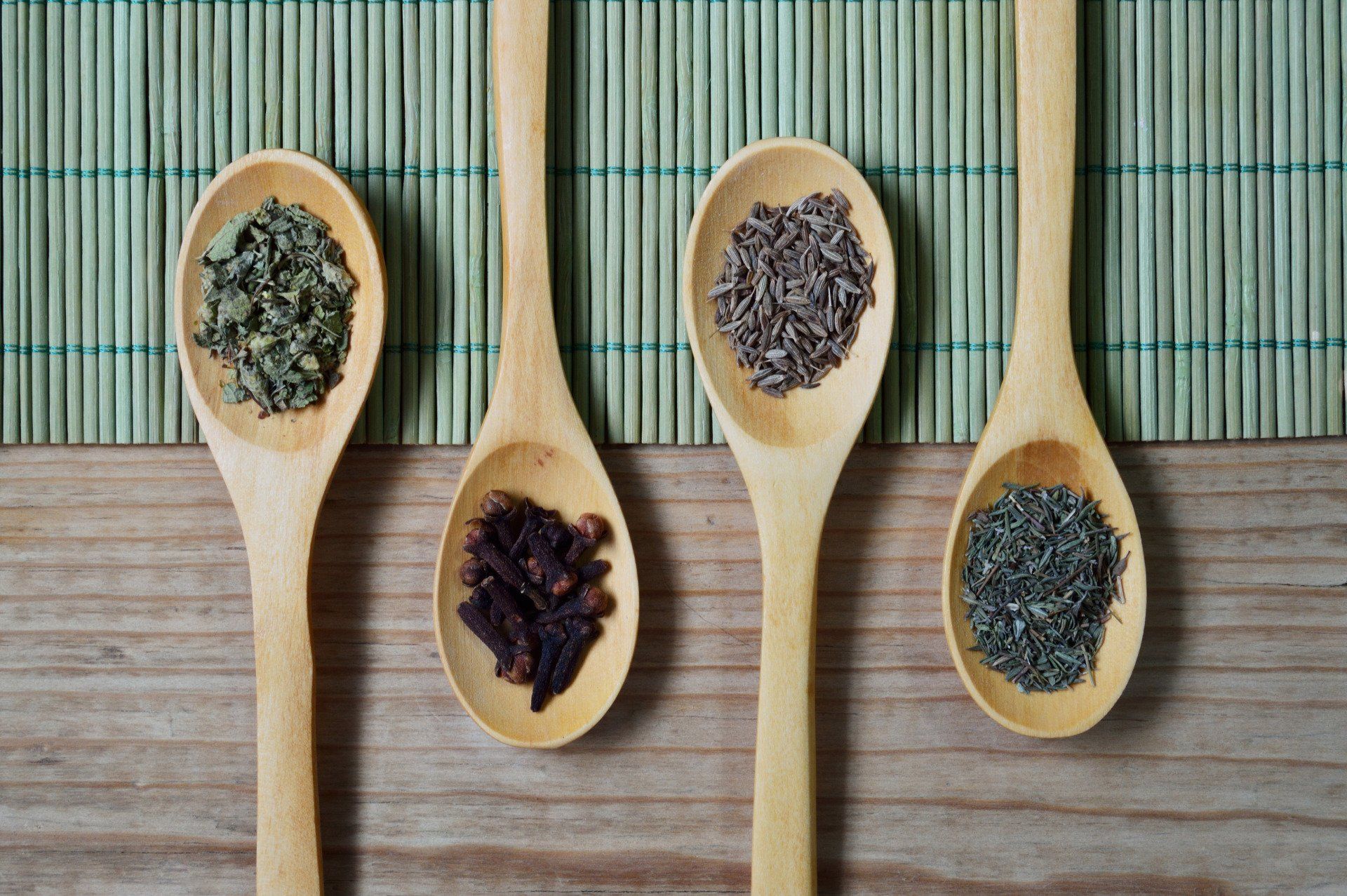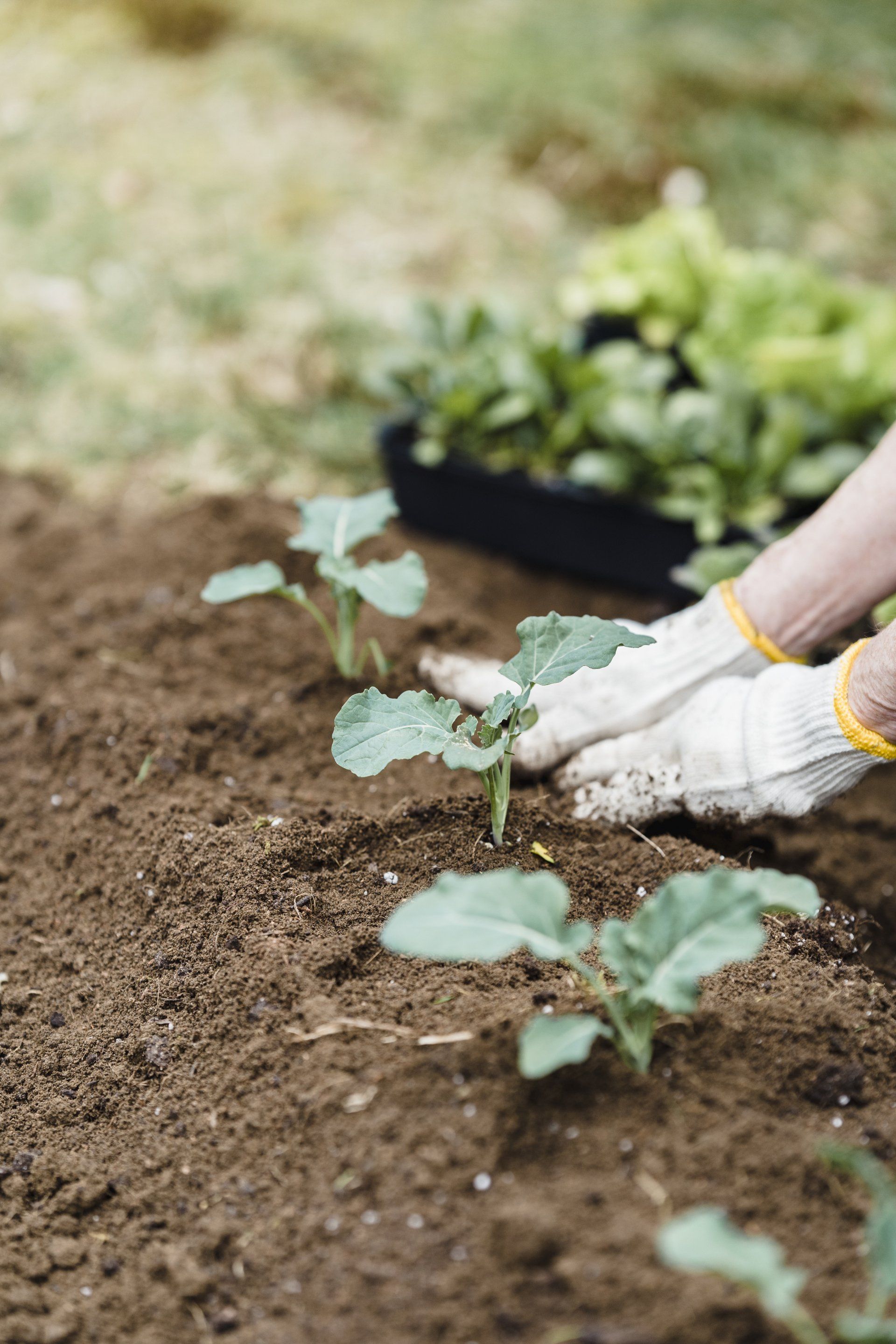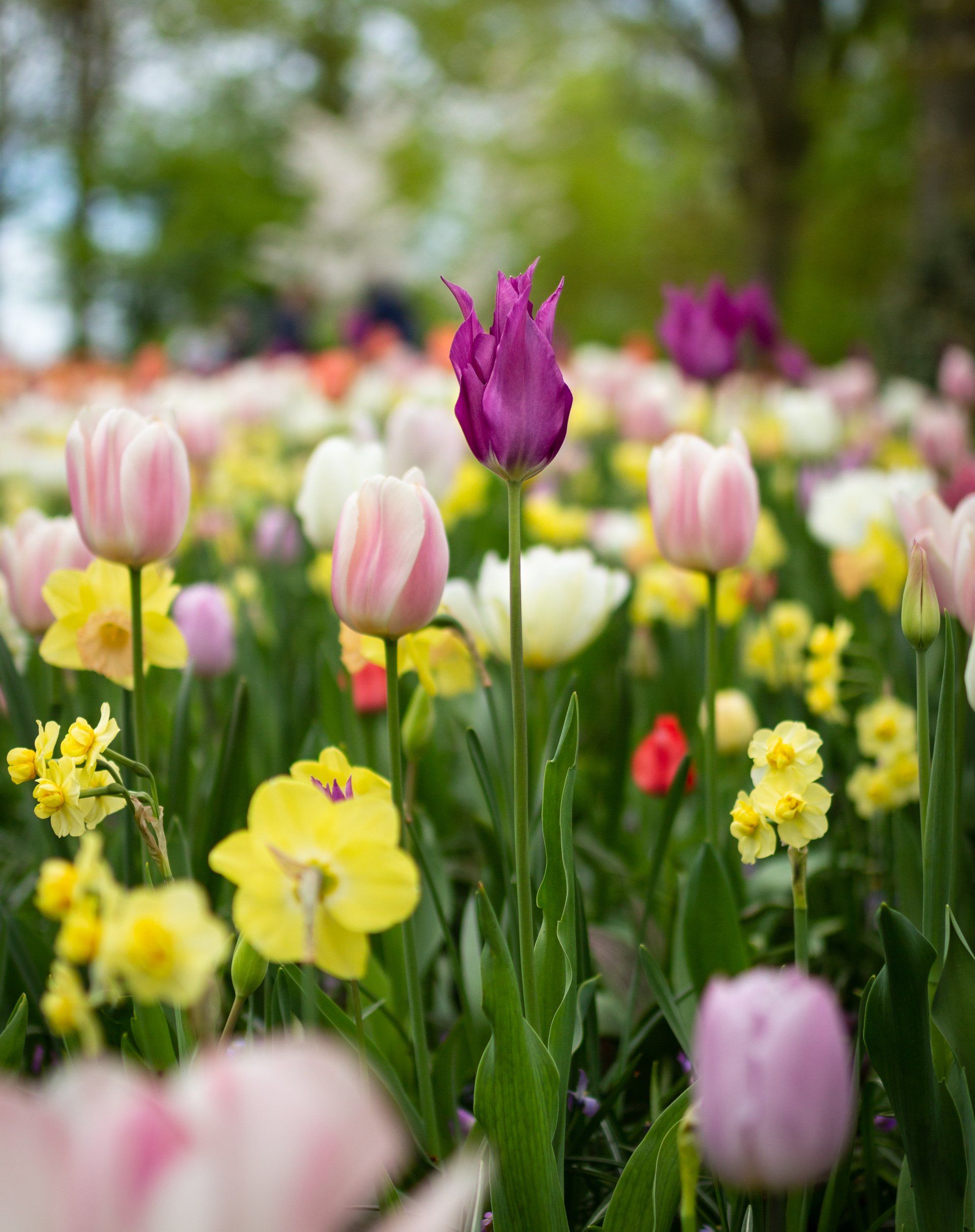Hardscaping
June 10, 2024
Hardscaping involves the use of non-living elements to create structure, functionality, and visual interest in outdoor spaces. There is a wide range of materials commonly used in hardscaping, each offering unique characteristics in terms of durability, aesthetics, and versatility. Here are some of the most commonly used materials in hardscaping:
- Natural Stone: Natural stone, such as flagstone, slate, limestone, and granite, is prized for its durability, natural beauty, and timeless appeal. It can be used to create pathways, patios, retaining walls, and garden borders, adding texture and visual interest to the landscape.
- Brick: Brick is a classic hardscaping material known for its warm, rustic charm and versatility. It can be used to create pathways, driveways, patios, and walls, and is available in a variety of colors, sizes, and patterns to suit different design styles.
- Concrete: Concrete is a versatile and cost-effective hardscaping material that can be molded into virtually any shape and size. It is commonly used for patios, walkways, driveways, and retaining walls, and can be stamped, stained, or textured to mimic the look of natural stone or brick.
- Pavers: Pavers are pre-cast concrete or clay units that are used to create durable and visually appealing surfaces for patios, walkways, and driveways. They come in a wide range of shapes, sizes, colors, and patterns, allowing for endless design possibilities.
- Wood: Wood is a warm and natural hardscaping material that adds a touch of warmth and character to outdoor spaces. It is commonly used for decks, pergolas, fences, and garden borders, and is available in a variety of species, grades, and finishes to suit different aesthetic preferences.
- Composite Materials: Composite materials, such as recycled plastic and wood fibers, offer the look of wood with the durability and low maintenance of plastic. They are commonly used for decking, fencing, and edging, and are resistant to rot, decay, and insect damage.
- Metal: Metal, such as steel, aluminum, and wrought iron, can be used to create durable and visually striking hardscaping elements such as fences, gates, arbors, and trellises. It adds a contemporary touch to outdoor spaces and can be customized to suit different design styles.
- Gravel and Crushed Stone: Gravel and crushed stone are cost-effective hardscaping materials commonly used for pathways, driveways, and drainage solutions. They come in a variety of sizes and colors and provide excellent drainage while adding texture and visual interest to the landscape.
- Boulders and Rock: Boulders and rocks can be used to create naturalistic accents, focal points, and retaining walls in the landscape. They add texture, dimension, and visual interest and are available in a variety of sizes, shapes, and colors to suit different design styles.
- Masonry Blocks: Masonry blocks, such as concrete blocks and cinder blocks, are versatile hardscaping materials commonly used for retaining walls, garden beds, and outdoor kitchens. They are durable, easy to work with, and available in a variety of sizes, shapes, and finishes.
These are just a few examples of the many materials commonly used in hardscaping. The choice of materials depends on factors such as budget, design aesthetic, site conditions, and functional requirements, and a skilled landscape designer can help clients select the perfect materials to bring their vision to life.

Integrating herbs into a garden plan not only elevates the aesthetic appeal of the space but also serves a practical purpose, such as aiding in bug control and attracting beneficial insects. When planning to incorporate herbs into a garden, consider their growth habits, sunlight requirements, and compatibility with other plants. Strategically place herbs with strong fragrances and natural bug-repellent properties, such as basil, mint, lavender, and rosemary, throughout the garden to deter pests like mosquitoes, aphids, and beetles. These aromatic herbs not only add beauty and fragrance to the garden but also act as natural insect repellents, reducing the need for chemical pesticides. Additionally, herbs like thyme, chives, and dill can attract beneficial insects such as ladybugs, lacewings, and hoverflies, which prey on garden pests and help maintain a healthy balance in the ecosystem. By creating a diverse and harmonious environment that incorporates herbs into the garden plan, gardeners can enhance the beauty of the space while promoting natural pest control and fostering a thriving and sustainable ecosystem.

Including vegetables in your garden not only provides an abundant source of fresh, nutritious produce but also offers numerous benefits for both the environment and your well-being. From promoting sustainable living to fostering a deeper connection with nature, growing vegetables can enrich your life in many ways. Here's why you should consider incorporating vegetables into your garden and how to create a plan to do it. Benefits of Including Vegetables in Your Garden: Fresh, Nutritious Produce : Growing your own vegetables allows you to harvest fresh, flavorful produce right from your backyard, ensuring optimal taste, quality, and nutritional value. Homegrown vegetables are rich in vitamins, minerals, and antioxidants, promoting health and well-being. Cost Savings : Growing your own vegetables can help you save money on grocery bills, especially during the peak growing season when produce prices are highest. By investing time and effort into cultivating your own food, you can enjoy a bountiful harvest at a fraction of the cost of store-bought produce. Environmental Benefits : Growing vegetables at home reduces your carbon footprint by minimizing transportation and packaging associated with store-bought produce. Additionally, organic gardening practices such as composting, mulching, and water conservation promote soil health and biodiversity, contributing to a healthier planet. Educational Opportunities : Gardening provides valuable hands-on learning experiences for people of all ages, teaching important skills such as planning, planting, and harvesting. It also offers opportunities for children to learn about where food comes from, fostering a deeper appreciation for nature and the environment. Stress Relief and Mental Health Benefits : Spending time in the garden has been shown to reduce stress, anxiety, and depression, promoting overall mental health and well-being. The act of gardening allows you to connect with nature, practice mindfulness, and enjoy the therapeutic benefits of being outdoors. Creating a Plan to Include Vegetables in Your Garden: Assess Your Space : Evaluate the size, layout, and sunlight exposure of your garden to determine the best location for growing vegetables. Consider factors such as soil quality, drainage, and proximity to water sources. Select Suitable Vegetables : Choose vegetables that are well-suited to your climate, soil conditions, and growing season. Consider factors such as frost dates, heat tolerance, and days to maturity when selecting vegetable varieties for your garden. Plan Your Garden Layout : Sketch out a garden plan that includes designated areas for planting vegetables, pathways, and any supporting structures such as trellises, stakes, or raised beds. Consider factors such as crop rotation, companion planting, and spacing requirements to optimize yields and minimize pest and disease problems. Prepare the Soil : Amend the soil as needed to improve fertility, texture, and drainage, using organic matter such as compost, aged manure, or cover crops. Conduct a soil test to determine nutrient levels and pH, and make any necessary adjustments to create an optimal growing environment for vegetables. Plant and Maintain Your Garden : Follow planting recommendations for each vegetable variety, spacing seeds or transplants according to their specific requirements. Provide adequate water, sunlight, and nutrients throughout the growing season, and monitor the garden regularly for signs of pests, diseases, or nutrient deficiencies. Implement organic gardening practices such as mulching, companion planting, and natural pest control methods to promote a healthy and productive garden. By including vegetables in your garden and following a well-thought-out plan, you can enjoy the many benefits of growing your own food while nurturing a deeper connection with nature and promoting a healthier, more sustainable lifestyle. Whether you have a small backyard plot or a sprawling vegetable garden, there's nothing quite like the satisfaction of harvesting your own homegrown produce and sharing it with family and friends.

Flower gardening is not just a hobby; it's a joyful and fulfilling experience that brings immense satisfaction and pleasure to gardeners of all ages. Here's why flower gardening is so much fun: Creativity and Expression : Flower gardening allows individuals to express their creativity and personalize their outdoor spaces with an endless array of colors, shapes, and textures. From selecting unique plant combinations to designing beautiful flower beds and borders, gardening offers a canvas for artistic expression and experimentation. Therapeutic Benefits : Spending time in the garden has been shown to reduce stress, anxiety, and depression, promoting overall mental health and well-being. The act of gardening allows individuals to connect with nature, practice mindfulness, and enjoy the therapeutic benefits of being outdoors, fostering a sense of peace, tranquility, and inner calm. Sensory Delight : Flower gardening engages all the senses, from the vibrant colors and fragrant scents of blooming flowers to the soothing sounds of rustling leaves and chirping birds. The tactile experience of digging in the soil, planting seeds, and tending to plants provides a sensory-rich environment that stimulates the senses and nourishes the soul. Connection with Nature : Flower gardening fosters a deeper connection with the natural world, allowing individuals to observe the cycles of growth and change firsthand and develop a greater appreciation for the beauty and diversity of the plant kingdom. Gardening encourages stewardship of the environment and promotes conservation efforts to protect precious resources for future generations. Community and Sharing : Flower gardening brings people together, whether it's sharing tips and advice with fellow gardeners, participating in community gardening projects, or exchanging plants and seeds with friends and neighbors. Gardening fosters a sense of camaraderie and belonging, creating opportunities for social interaction and connection with others who share a passion for plants and flowers Planning a flower garden is an exciting process that involves careful consideration of factors such as location, sunlight, soil conditions, plant selection, and design aesthetics. By following a systematic approach, gardeners can create a vibrant and cohesive garden that blooms with color and fragrance throughout the growing season. The first step in planning a flower garden is to assess the site and determine the optimal location for planting. Consider factors such as sunlight exposure, soil drainage, and proximity to water sources and architectural features. Choose a spot that receives at least 6 hours of sunlight per day for most flowering plants to thrive. Next, evaluate the soil conditions and make any necessary amendments to improve fertility, drainage, and pH levels. Conduct a soil test to determine nutrient levels and pH, and add organic matter such as compost, aged manure, or peat moss to enrich the soil and create a healthy growing environment for plants. Once the site has been prepared, it's time to select plants for the garden. Consider factors such as bloom time, height, color, and fragrance, and choose a mix of annuals, perennials, bulbs, and shrubs to provide a succession of blooms throughout the growing season. Pay attention to the specific growing requirements of each plant, including sunlight, soil moisture, and hardiness zones, and group plants with similar needs together to ensure they thrive. After selecting plants, create a planting plan that outlines the layout and design of the garden. Consider factors such as plant heights, bloom colors, and texture, and arrange plants in layers to create visual interest and depth. Incorporate focal points such as specimen plants, ornamental grasses, and garden ornaments to add structure and personality to the garden. Finally, implement the planting plan by installing plants according to spacing recommendations and watering them thoroughly to establish roots. Mulch the garden with organic materials such as shredded bark or straw to conserve moisture, suppress weeds, and insulate plant roots. Monitor the garden regularly for signs of pests, diseases, and nutrient deficiencies, and take appropriate action to maintain plant health and vitality. By following these steps and paying attention to the specific needs of plants, gardeners can create a beautiful and bountiful flower garden that brings joy and beauty to the landscape throughout the growing season. With proper planning and care, a flower garden can become a cherished sanctuary that delights the senses and nourishes the soul. In conclusion, flower gardening is a fun and rewarding activity that offers countless benefits for the mind, body, and soul. Whether you're a seasoned gardener or just starting out, the joy of planting, growing, and nurturing flowers is an experience like no other, enriching your life and bringing beauty and delight to your outdoor spaces.